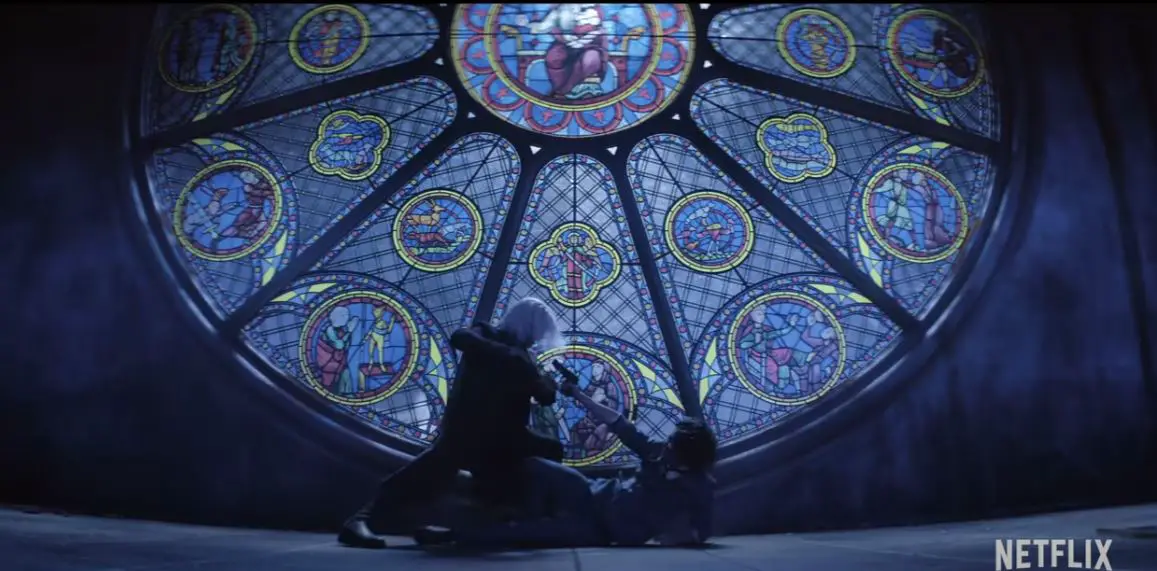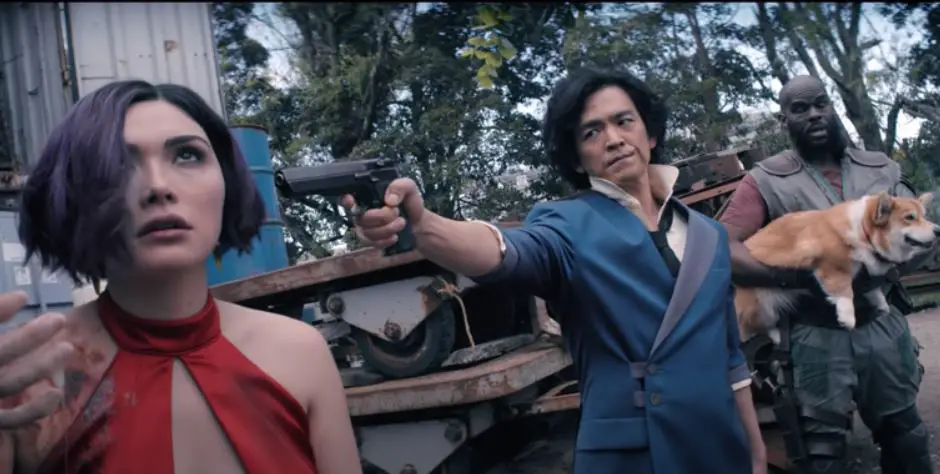Adapting stories to new mediums is tough. This has historically been especially true for anime. Cowboy Bebop is a bit easier to transfer to live-action than, say, One Piece, but you only need to look at Netflix’s Death Note to see how even stories seemingly fit for live-action are often disasters. How do you decide what will work in the switch from animation to live-action? Where do you draw the line? How much of the point is to recreate the story, and how much of the point is to try something new with it?
I can go ahead and assuage some fears, at least; Cowboy Bebop is not a Death Note-level disaster. In fact, it is a perfectly pleasant show you can binge in a weekend. However, it is a highly inconsistent show. One that never seems to have decided whether it wanted to recreate the classic anime or try something entirely new. This inability to make up its mind about what it wants to be plagues the show from beginning to end.
And it is no clearer how this inconsistency got in the way than in the final episode of the season. Buckle in for spoilers, or steer clear if you want to avoid them. Three, two, one, let’s jam.

Cowboy Bebop’s first season ends with what is basically a recreation of the anime’s iconic “Ballad of Fallen Angels” episode. Vicious has made his move to take over the Syndicate and, after multiple failed attempts throughout the season to off Spike with hired guns, decides to set a trap to do it himself by kidnapping Jet’s daughter, who he will only return if Jet hands Spike over.
Naturally, Jet and Spike team up but fail. They are taken to a church that copies the one from the anime, stuff goes down, and here is where Cowboy Bebop clearly could not decide just what in the world it was trying to do, or whether it wanted to please anime fans or not.
In the anime episode, Faye is captured and Spike goes to rescue her. Faye escapes, Spike and Vicious fight, Vicious puts Spike through a stained-glass window to fall to his hopeful death, Spike leaves behind a grenade to hopefully blow Vicious up. It is one of the coolest and most iconic moments of the series. Netflix’s version does something similar, but…yeah, not quite.
In this version, they do recreate the fight between Spike and Vicious, but sandwich it between two wildly different scenarios that do not fit the fight. First, Faye rescues a bound Spike and Jet in the church, which allows them to escape. Only then does Spike go back to the church for the fight, which ends with his and Vicious’s shared love interest, Julia, shooting Vicious and then shooting Spike through the window, rather than Vicious doing it.
Yeah, we’re getting to that Julia thing, but hold on a second. Let’s talk about how we got there, first.
Now, there’s nothing necessarily wrong with using Jet’s daughter to set this situation up. Jet’s relationship with his daughter is one of the best running subplots throughout Netflix’s Cowboy Bebop, and it is a fitting way to reveal Spike’s Syndicate past, which simmers unknown beneath the surface of his and Jet’s relationship, threatening to blow the whole thing up.
Faye’s rescue at the church is fun. It’s meaningful. As the culmination of the way the Bebop crew bonded throughout the season, it works well. And it is mostly original. Everything about it except the location is original material that works just fine on its own. It is the right idea for an adaptation, where you use a familiar concept but try something different.
The problem is that they clearly felt they needed to tie it to their “Ballad of Fallen Angels” recreation rather than let the moment stand on its own. It’s almost like they didn’t think this subplot could stand on its own and needed something else to make fans care. So, they choose to tie it to the Spike/Vicious fight which follows.
Only said fight is now not at all the same, but they go to great lengths to recreate it shot for shot anyways, complete with the same dialogue when the two reach a stalemate. Dialogue that, by the way, no longer fits either character, and especially not the massive changes made to Vicious. The anime uses Vicious sparsely, and as a one-note cliché more than a character. Netflix tries to give him a fleshed-out character arc (and fails), and it tears apart the mystique and brutality that defined Vicious and makes his church monologue work in the anime. It does not work the same here.
It really is a perfect example of how Cowboy Bebop clearly wanted to make significant changes to things, and sometimes does, but then also felt immense pressure to recreate fan-favorite moments so fanatics wouldn’t flood Twitter with angry hot takes about how awful the show was. And this is a problem with adaptation, of course, finding the middle ground between keeping the important points but also doing something different and worth retelling the story for.

I cannot help but wish Cowboy Bebop had felt confident enough to go their own way. They clearly, undoubtedly wanted to. You need only look at Julia and Vicious to see that. But they didn’t, and so they committed that sin of smashing changes into existing content in ways that changes it too much for the worse.
Julia’s presence is a huge change to the original show. Rather than being a flashback presence who only shows up in the final couple episodes, Julia is present and active throughout the events of Netflix’s version. She is married to Vicious rather than on the run from him, and the whole backstory between the three of them receives an entire episode. In the end, she shoots both Vicious and Spike because of her ambition to use Vicious’s coup as a chance to seize power herself.
For fans of the anime, you know how drastic a chance that is from anime Julia, who runs from the Syndicate and Spike in order to save herself, before eventually reconnecting with Spike at the end of the show. Now, if Netflix’s version had committed to making Julia an entirely different person from the beginning, maybe this would have worked better. But, again, they tried to walk that fine line between making everyone happy when they should have just picked a side.
Julia is clearly meant to fear Vicious, fear the Syndicate, and want a way out, which is similar enough to the anime, until they suddenly decide she wants to rule the Syndicate, which comes out of nowhere. They should have made Julia a different person entirely to commit to this eventual season-ending twist. Shoot, just create a new character entirely instead of Julia.
And, just like with Jet’s daughter, they wanted to piggyback on the church fight rather than just go their own way, seemingly without considering why all these scenes and moments just do not fit together. All it does is connect them to scenes that the show is ruining.
This is a common theme throughout the show, and it leads to so many instances where Cowboy Bebop’s entirely original material is significantly better than the anime episodes they adapt. Jet’s episode working with an old detective partner to seek a bounty from his past is much better than Netflix’s version of Asimov. Faye’s new “mom,” who replaces the scam from the anime, is much better than the adaptation of the eco-terrorists.
Cowboy Bebop never decides if it wants to commit to the absurd parts of the anime, ground them in reality, or outdo that absurdity altogether. On the one hand, they will make Faye (and her dialogue) more over the top than anime Faye ever acted. On the other, they will take the surreal creepiness of Mad Pierrot and randomly decide to give him jetpacks on his legs.
Meanwhile, the whole problem could have been avoided if they just created some original Syndicate killer for Vicious to send after Spike instead of using an anime character they either could not adapt or had no interest in adapting.
Cowboy Bebop has a lot of problems independent of any adaptational choices. The dialogue is often flat out bad and goes a long way in destroying the show’s efforts to revamp Faye’s character. The action sequences are often weirdly edited. There’s really no reason for these episodes to be 50 minutes long. But it’s not bad. Not at all. Of course it’s a pale imitation of the original, but it comes close to being a really fun show.
I can’t help but think it would have reached that level if they ever made up their mind about what they want to do with it.
Images Courtesy of Netflix
Have strong thoughts about this piece you need to share? Or maybe there’s something else on your mind you’re wanting to talk about with fellow Fandomentals? Head on over to our Community server to join in the conversation!

